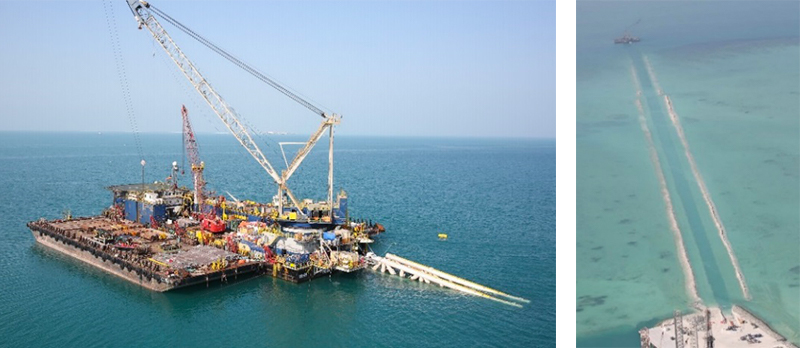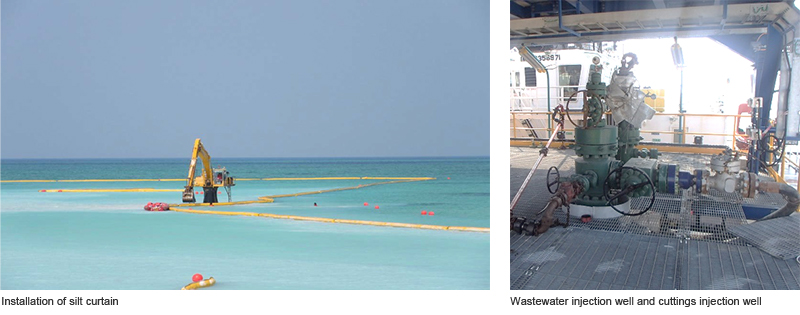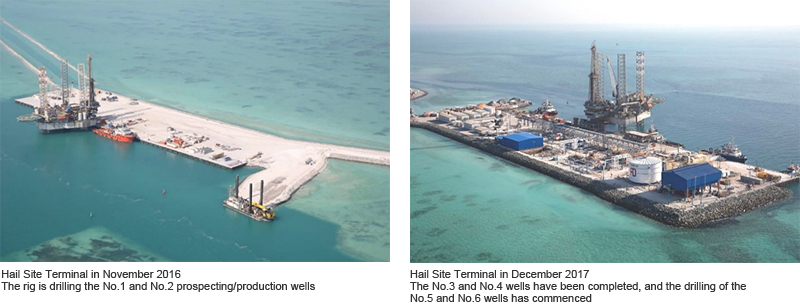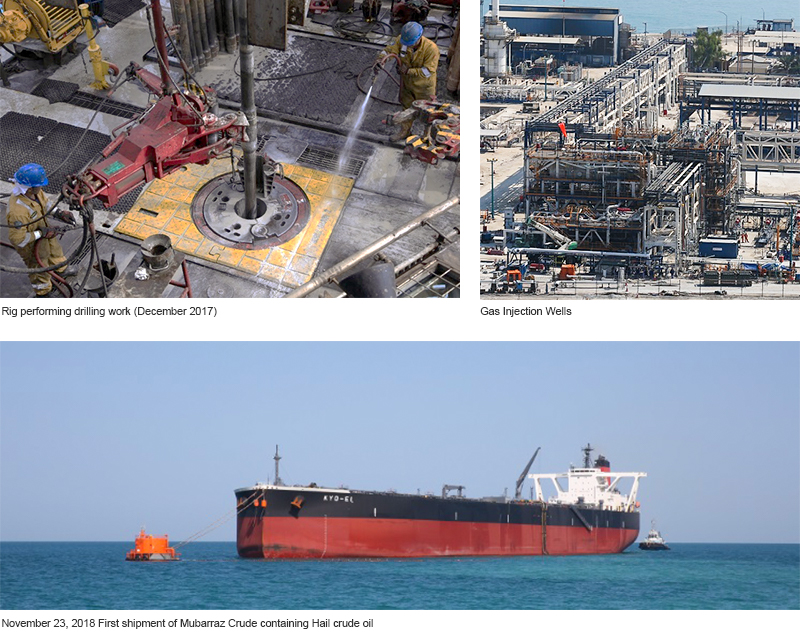Our Business

Our Business

Home > Our Business > Development of New Oil Fields
In February 2011, ADOC obtained development rights for the Hail Oil Field where oil had been discovered but not yet extracted through a new concession agreement.
As a result, with the aim of beginning crude oil production in the field, which would be our fourth, in October 2012 we drafted a plan to conduct a detailed exploration of the structure of the oil field as well as a development plan, and submitted them to the Abu Dhabi National Oil Company (ADNOC), and together we conducted a detailed investigation, which resulted in the development plan being approved in December 2014.
After that, a three-dimensional seismic survey was carried out, an artificial island was constructed, and the waterways were dredged.
In March 2016, we submitted a revised version of the detailed structural exploration plan and development plan to ADNOC and they were approved. The revised plans included an updated geological-structure map, which reflected the results of the 3D seismic survey, a reassessment of the volume of reserves, and production forecasts based on oil-stratum simulations.
To make production operations in the Hail Oil Field easier, we decided to build an integrated terminal that would combine wells and surface production facilities in a single location. To arrange the production wells efficiently in relation to the oil field, the terminal needed to be situated in the center of the oil-field structure, but this was south of Mubarraz Island, and the site was surrounded by scattered shallows. Because of this, the decision was made to fill in these shallows and construct an artificial island. Furthermore, because the plan was to bring in a mobile offshore jack-up rig to drill the wells, we also dredged and expanded the waterways.

An undersea pipeline to take oil produced in the Hail Oil Field to Mubarraz Island was laid. Between the Hail Oil Field and Mubarraz Island, we also laid an electric cable to supply power from Mubarraz Island to the Hail Oil Field, and two multipurpose pipelines.

The sea around the Hail Oil Field is one of the world's most important dugong habitats as it is home to numerous marine organisms such as sea turtles and dolphins. We therefore installed a silt curtain to prevent the release of sand and muddy water in connection with the dredging work and artificial-island construction.
In addition, to prevent wastewater and dirty water from excavation work, human wastewater from the facility construction camp, etc. being released into the sea, an injection well was dug to safely inject this water underground and ensure Zero-Discharge to the sea. So we proceeded with development only after taking steps like these to prevent marine pollution.

The development of the Hail Oil Field was conducted in two phases. Phase 1 was the early-production phase, and involved flush production and the construction of production equipment in conjunction with that. Phase 2, meanwhile, involved water flooding and the construction of equipment for gas-lift oil drilling in order to prepare for a decline in production in the future as a result of lower oil-stratum pressure and an accompanying increase in water.
In Phase 1, we drilled prospecting/production wells, dedicated production wells, wastewater injection well, and cuttings injection well at the Hail Site Terminal we constructed in the Hail Oil Field. Concurrently, various pipelines were laid, a multiphase flowmeter was installed, and a chemical injection facility, an instrumentation control room, an electrical room, and a fire-fighting facility were constructed. In conjunction with this, on Mubarraz Island, we installed new separators for processing crude oil from the Hail Oil Field, ancillary equipment, pipes, etc.

We opened the valve on the first well in the Hail Oil Field and commenced production on November 7, 2017. After that, subsequent wells began production as they were completed, and in January 2019 all wells were capable of extracting oil, marking the completion of Phase 1 development. Going forward, we will be performing studies and moving forward with development for Phase 2 with the aim of increasing yields.
